2010 Toyota Prius III Review

The best part about the all new Prius isn’t the optional tech goodies or the lower price for 2010; it’s not even the superior fuel economy; it’s the fact that driving the car is actually fun. We’re not talking about fun in terms of handling or performance. Don’t be silly. This is a Prius after all. We’re talking about the fun that comes from driving a car that doubles as a real world video game. Ok, so maybe it’s a video game designed by Al Gore, but there’s a lot enjoyment to be had in challenging yourself to get the best fuel mileage possible. And if you thought the upcoming Gran Tusimo 5 game was cool, the Prius already registers damage – but we don’t recommend it.
FAST FACTS
| 1. Fuel economy is 51/48 mpg (city/hwy) with an average of 50 mpg – a 4-mpg improvement over the last model. |
| 2. The 2010 Prius is just $22,400 to start. |
| 3. EV, ECO and Power modes let you select your driving style and the car will do the rest. |
LIKE DRIVING A FUEL-ECONOMY VIDEO GAME
What gives the Prius its game-like feel are the numerous control screens that provide readouts of the car’s fuel efficiency, in real time, over a long period.
In no particular order, there’s an “Energy Monitor” screen that shows a diagram of the car with the gasoline engine, electric motor and battery pack. This is more of a general knowledge tool that is nice aesthetically, as it shows what power source is driving the wheels and when the battery is being recharged.
Next up is the “Hybrid System Indicator” which essentially shows the same information but charts it on a scale. This screen is the most useful to aid in fuel efficient driving as it allows you to more easily see when you’re only driving on electric power (when just the ECO section is lit) and when you’re getting close to using the gasoline engine. By paying close attention to this, you can find a balance between fuel economy and acceleration.
The final two screens are the “1 Minute Consumption” display, which is self explanatory, as is the “Trip B Past Record” screen, which shows your fuel economy for the current trip, as compared to the four trips before. This screen even allows for some friendly competition if more than one driver will be using the car regularly. We certainly enjoyed competing against the journalist who had the press car before us.
TOUCH TRACER CONTROLS MAKE ALL SYSTEMS EASY TO USE
Making this all the more like a video game is the way to scroll between screens. It’s done easily through Toyota’s new iPod-like Touch Tracer system. When touched, images of the circular dials are immediately transposed on the display screen, which even lights up the section of the dial that the driver has his or her finger on. The Touch Tracer system is also used to operate the car’s climate and audio controls. It’s not only intuitive but it also allows the driver to spend more time with their eyes on the road.
On top of those screens and controls, the third-generation Prius also offers four driving modes – which again seems like something out of a video game. There’s a standard mode, EV mode, ECO mode and Power mode.
EV mode can be used at low speeds when the batteries have a significant charge. It allows the car to drive under just electric power for a short period of time, but is mostly a gimmick, as the Prius will naturally do this anyway.
ECO mode is more useful for every day driving as it dulls the throttle response, ensuring a fuel-efficient drive. The Power button does the opposite and gives the car a good amount of kick. Once you’re comfortable dealing with all the cockpit buttons you won’t flinch about reaching over for the Power button every time you go to merge onto the highway.
Finally, to complete the video game analogy, the 2010 Prius, like past models, comes with a joystick for operating the transmission and a push button for park. We have to admit that this gimmick is just a step too far. The dainty little joystick looks and feels fragile and really has a feminizing effect on the car.
50 MPG AND ACCELERATION THAT YOU CAN LIVE WITH
With the challenge before us we drove the Prius with a light foot. Constantly checking the many screens and trying to avoid using any fuel at all, we managed an average of 50 mpg and the whole process, as engaging as it was, helped the mind numbing hours spent stuck in traffic every week pass by a lot faster.
So yes, it has a lot of gadgets and we enjoyed playing with them all, but the reality is that the package works. Toyota claims an official 51 mpg city and 48 mpg highway for an average of 50 mpg – exactly what we got!
Part of the reason for the new Prius’s improved rating is it’s much-improved highway fuel economy thanks to a larger engine. As ironic as it seems, the larger 1.8-liter motor struggles less at highway speeds and helps deliver a better number. The other added benefit is a big increase in horsepower, taking the car from 110-hp to 134 – roughly a 30 percent bump. The car’s 0-60 time is now a livable 9.8 seconds – down from 10.5.
Fuel-economy in colder climates has also been improved thanks to an exhaust heat recirculation system. Toyota says that at 23 degrees Fahrenheit the new Prius reaches ideal operating temperature 15 minutes earlier.
HIGH TECH GOODIES, BUT LOW GRADE TRIM
As for the rest of the package, in many ways it’s very much the same – as the exterior of the car would suggest. In fact, most people might not even distinguish the third generation car from the second-gen model, although for our part we actually think the hybrid’s futuristic shape is quite handsome.
The ride is nice and comfortable and we have to say the car feels bigger than it is, particularly out on the highway, which you might not expect in a smaller vehicle like this. For the record, the Prius is technically a mid-size sedan and not a compact, although it still manages to deliver an economy car driving experience.
The interior is a strange compilation of mostly low-grade trim components with high tech goodies. Adding to the economy-car feel is Toyota’s insistence to go with centrally located gauges, meaning that most of the space in front of the driver is occupied by a solid piece of dash plastic. This gives off an inherently cheap vibe.
As for the highest technology goodies, most of those sophisticated options are only available on top-trim models and not our Prius III tester. We did, however, get the solar panel roof that provides enough power to keep the fans running when the car is off, in order to avoid an excessively hot interior. This isn’t just a great comfort feature, but also means the AC doesn’t have to work as hard when you start up the car after it’s been sitting in a hot parking lot all afternoon. There is even a feature on the remote that will start the AC as you approach the car. Plus, the roof tilts and slides just like a conventional moonroof. This item comes as a package with the voice-activated navigation system for $3,830. The NAV can also be had on its own.
Only the Prius V model can be had with the $5,180 Advanced Technology Package, which includes Dynamic Radar Cruise Control (DRCC), Pre-Collision System (PCS), Lane Keep Assist (LKA), Intelligent Parking Assist (IPA) and navigation.
THE COMPETITION
The two biggest competitors to the Prius are Honda’s Insight and Ford’s Fusion Hybrid, neither of which are really any competition to the Prius – both for different reasons. The Insight is more attractively priced, starting from just $19,800. It’s technically smaller although not by much. What it doesn’t offer is the Prius’s fuel economy rating and manages just 40/43 mpg. As for the Fusion Hybrid, it doesn’t get Prius numbers either at 41/36 mpg, but that’s not the main reason why you might not cross-shop it against the Prius. The Prius, despite efforts on Toyota’s behalf to bring the car more mainstream just isn’t as easy to transition into for regular folks as the Fusion, thanks to the fact that the Ford is very much still a normal mid-size sedan.
EVEN EASIER TO GET INTO FOR 2010
Along with making the Prius more attractive to a broader population base thanks to a long list of high tech gadgets and more power, the biggest factor that is likely to put the Prius on people’s shopping lists is that it’s several thousand less than the model it replaces – which is incredible when you consider just how much better this gen-three car is. With no plans to actually deliver a Prius I model, the II starts at just $22,400, with the III model (as tested) fetching $23,400. Add on the 3,830 solar roof with Nav and the $750 destination charge and you’re looking at $27,980.
THE VERDICT
Along with being a genuinely entertaining car to drive, thanks to its video game-like operation, the Prius makes huge strides forward in 2010 in all areas, particularly in fuel economy, acceleration and price. There are still drawbacks to the car, like the rather low-grade interior and underwhelming driving experience.
Our biggest “if” when considering the Prius as a daily driver is whether we could actually live with the muted pedal feel – assuming of course, that we wanted to get maximum fuel economy. An interesting experiment would be to see just how good the fuel economy is when driven normally and in Power mode.
So until we get around to that, the Prius remains a solid option for those in search of greener transportation as it continues to be the leader in fuel economy.
RELATED READING
2010 Toyota Prius: First Drive
2010 Honda Insight
2010 Ford Fusion Hybrid Review
2010 Volkswagen Golf TDI: First Drive
2009 Volkswagen Jetta TDI
LOVE IT
- 50 mpg fuel economy rating
- Lower price for 2010
- ECO mode means you don’t have to worry about your driving style
LEAVE IT
- Mostly low-grade interior trim
- ECO mode gets best fuel economy but hard to live with

With AutoGuide from its launch, Colum previously acted as Editor-in-Chief of Modified Luxury & Exotics magazine where he became a certifiable car snob driving supercars like the Koenigsegg CCX and racing down the autobahn in anything over 500 hp. He has won numerous automotive journalism awards including the Best Video Journalism Award in 2014 and 2015 from the Automotive Journalists Association of Canada (AJAC). Colum founded Geared Content Studios, VerticalScope's in-house branded content division and works to find ways to integrate brands organically into content.
More by Colum Wood
















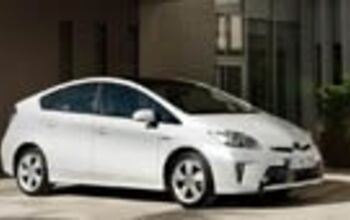




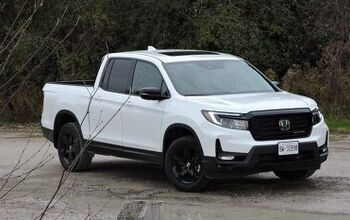

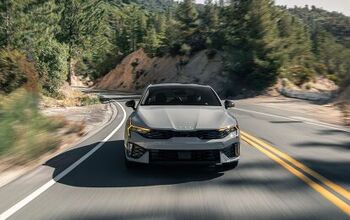

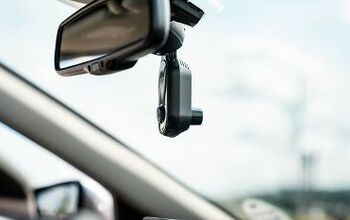
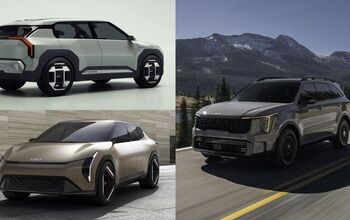


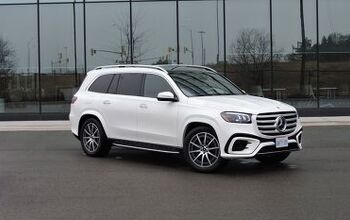

Comments
Join the conversation